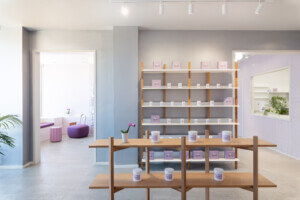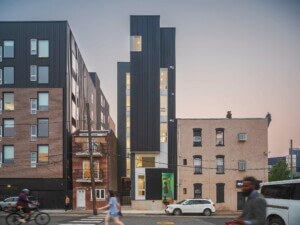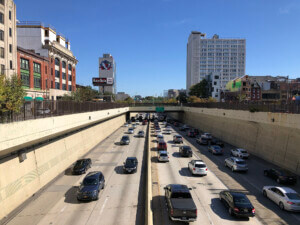After being first teased in early 2020 with scant details, the design of a new cultural institution dedicated to the “art and ideas” of renowned 20th-century artist and Philadelphian of very fine pedigree Alexander Calder has been unveiled for a 1.8-acre site along Benjamin Franklin Parkway in the heart of Philly.
Although the involvement of Herzog & de Meuron in the role of design consultant was previously announced, the formal reveal of the $70 million project, dubbed Calder Gardens, has come not only with a slew of renderings and a project schedule but also news that Piet Oudolf will design the sculpture-studded site’s namesake green spaces in a rare North American project for the Dutch garden designer and nurseryman of note.
Joining Herzog & de Meuron and Oudolf (not the first collaboration between the Pritzker Prize–winning Swiss duo and the famed garden designer, although their first to be realized) are landscape architect Brooklyn-based Richard Herbert and venerable Philadelphia firm Ballinger in the role of executive architect.
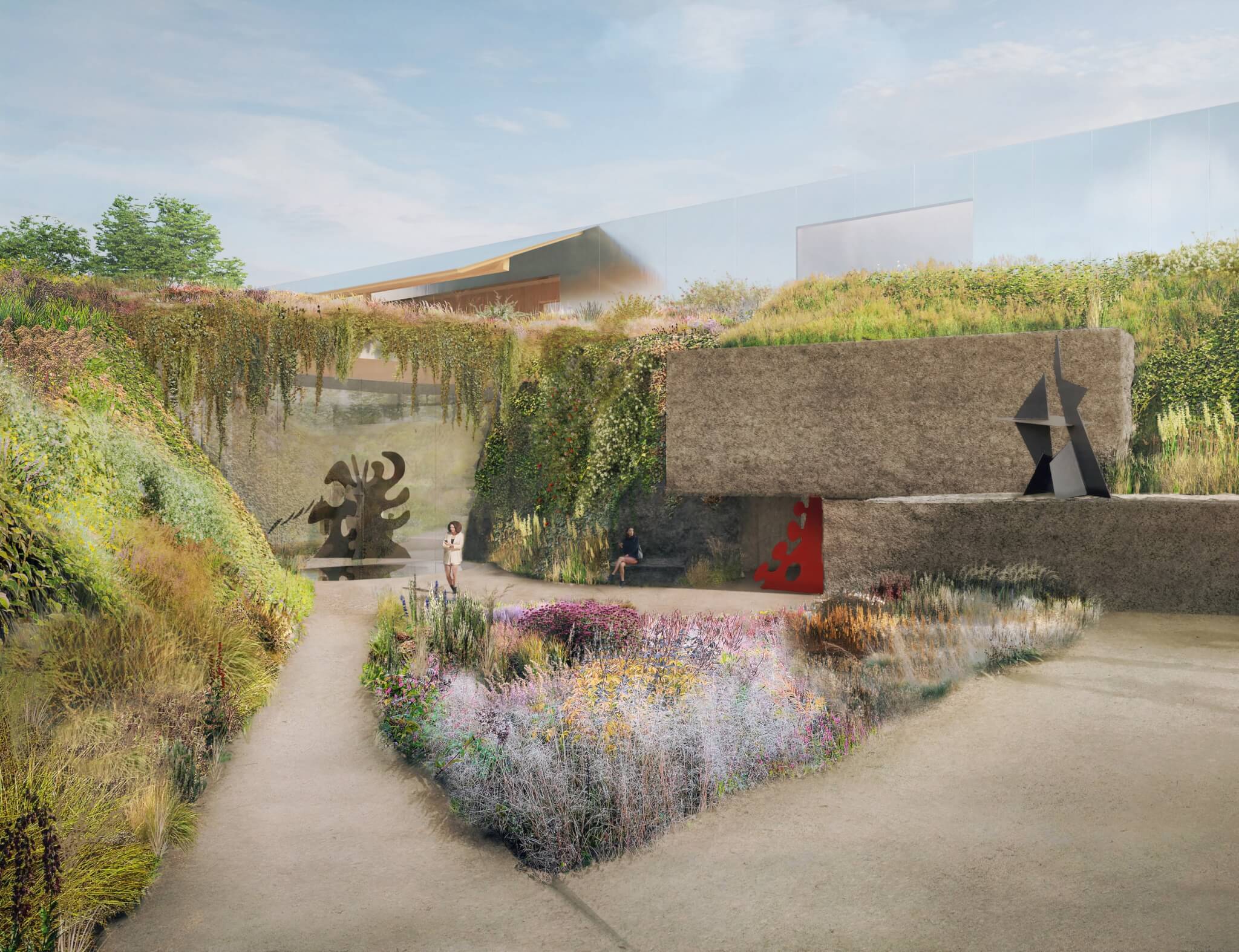
Oudolf’s bucolic landscape and Herzog & de Meuron’s 18,000-square-foot building will together serve as the backdrop for a rotating selection of works from the Calder Foundation. The New York–based nonprofit is dedicated to collecting, preserving, and exhibiting the works of the late artist best known for his monumental sculptures and hanging mobiles and who, although far from a Philadelphia lifer, has been claimed by the City of Brotherly Love as its own. (Calder, who died in 1976 at the age of 78 created much of his work in France and at a farm in rural Connecticut.) Studying to be a mechanical engineer at the Stevens Institute of Technology in New Jersey before decamping to Paris less than a decade later to pursue art, Calder also had an active hand in jewelry making, painting, printmaking, theatrical design, and eye-popping aircraft livery design.
In addition to showcasing works by Calder in what’s described as a contemplative and “sanctuary-like” venue in “constant dialogue with nature and the changing atmospheres of the seasons,” Calder Gardens will also provide “abundant opportunities for learning and community building through a schedule of inclusive public programs and special events,” a press announcement explained.
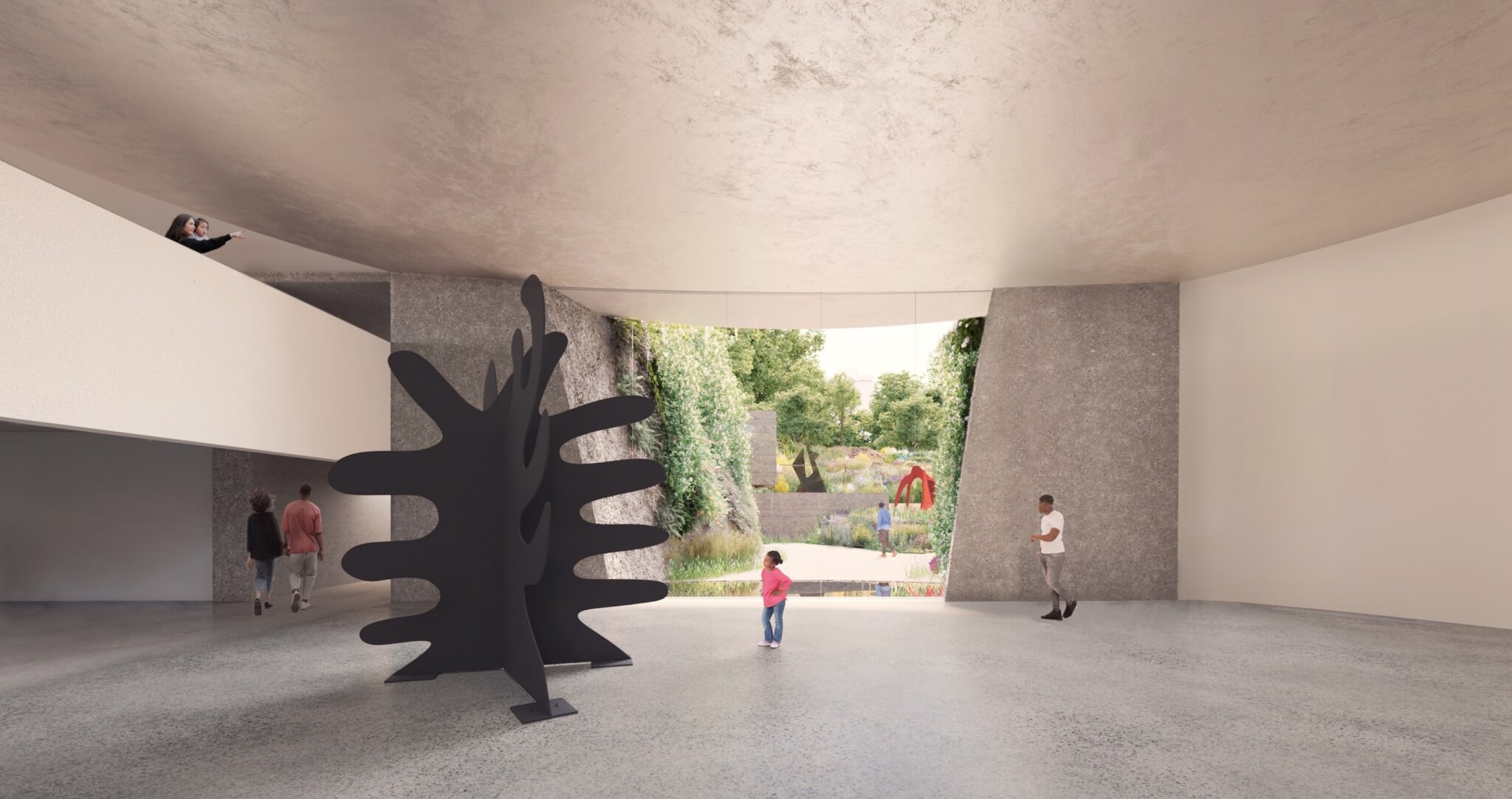
As for the prime piece of real estate along Ben Franklin Parkway that will serve as future home of Calder Gardens (the nonprofit is careful not to refer to itself as a museum), the parcel in question is an underutilized expanse of open space between 21st and 22nd Streets opposite the Tod Williams Billie Tsien Architects–designed home of the Barnes Foundation. The Barnes is more than just a close neighbor to the parkway’s newest major cultural attraction. It will also serve as operator of Calder Gardens, providing administrative, operational, and educational programming support when the site opens in 2024.
“Since the given site between the Vine Street and the Benjamin Franklin Parkway does not have much charm, we felt that plants and gardens could help transform it successfully and turn itself into an attractive place for the people of Philadelphia, rather than simply adding another museum building to the already impressive collection of museums which are lining up along Benjamin Franklin Parkway,” explained Jacques Herzog in a statement.
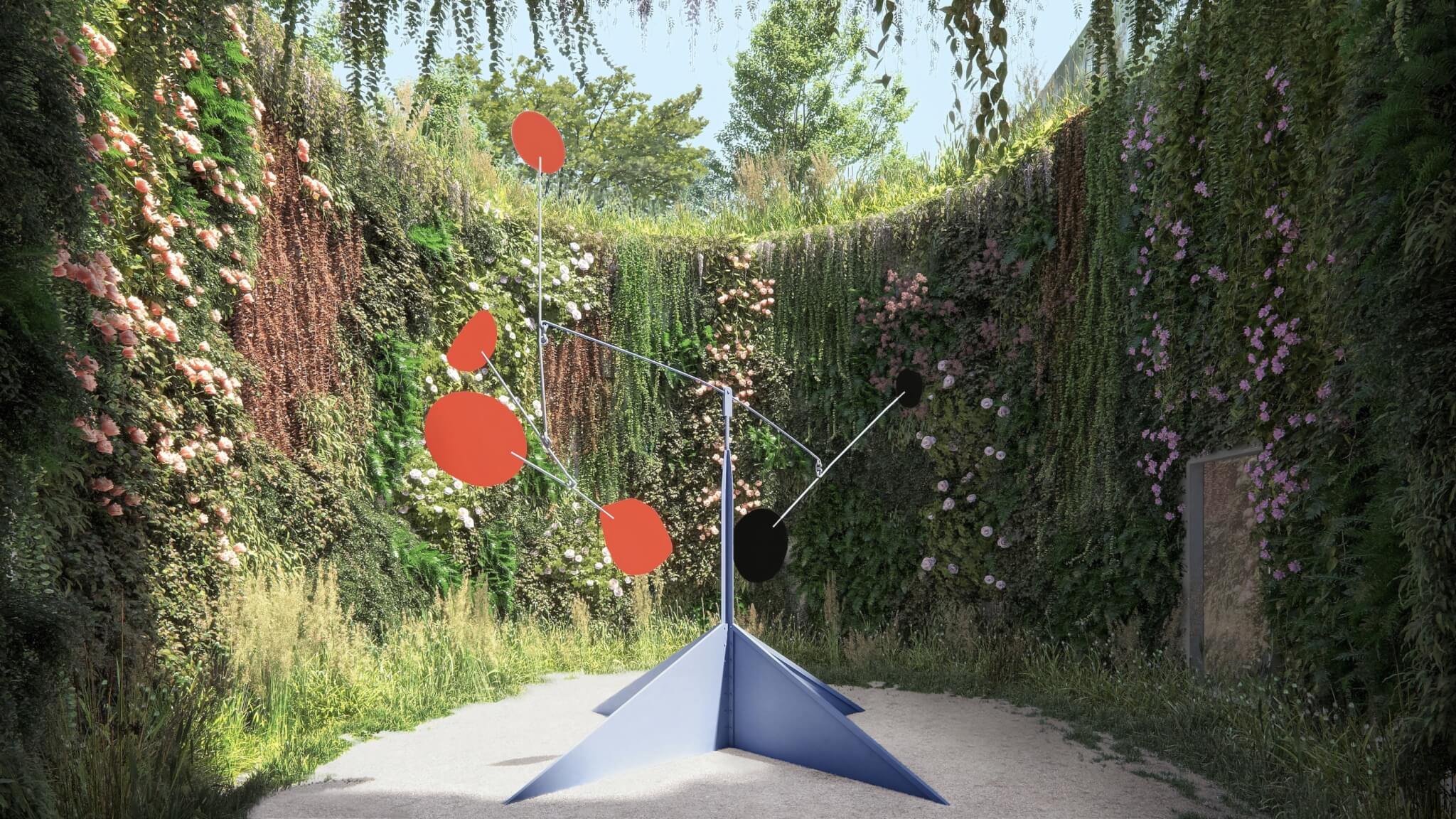
With its naturalistic, four-season landscaping (a hallmark of Oudolf), the site is anchored by a series of distinctive gardens—they include a Sunken Garden, Vestige Garden, and Parkway Garden—that the design team has envisioned as a succession of open-air galleries to complement Herzog & de Meuron’s half-buried, reflective metal-clad structure, which will play host to indoor exhibitions. Calder Gardens described the site as “a choreographed progression that moves visitors from the quotidian city context to a more contemplative realm beyond the traditional museum experience, allowing them to engage with art as a personal, real-time encounter—as the artist intended.”
Spread across two levels and faced with generous bands of glazing, Calder Gardens’ anchoring exhibition building enables visitors to survey Oudolf’s idyllic landscape from the inside and vice versa in a fuzzing of exterior and interior spaces. “For Calder Gardens, the horticultural design must also serve the works of art,” said Oudolf in a statement. “My hope is that people will take the time to stand still and think here, to fully experience these elements together and have an emotional reaction that stays with them long after their visit. It’s not about what you see, but what you sense.”
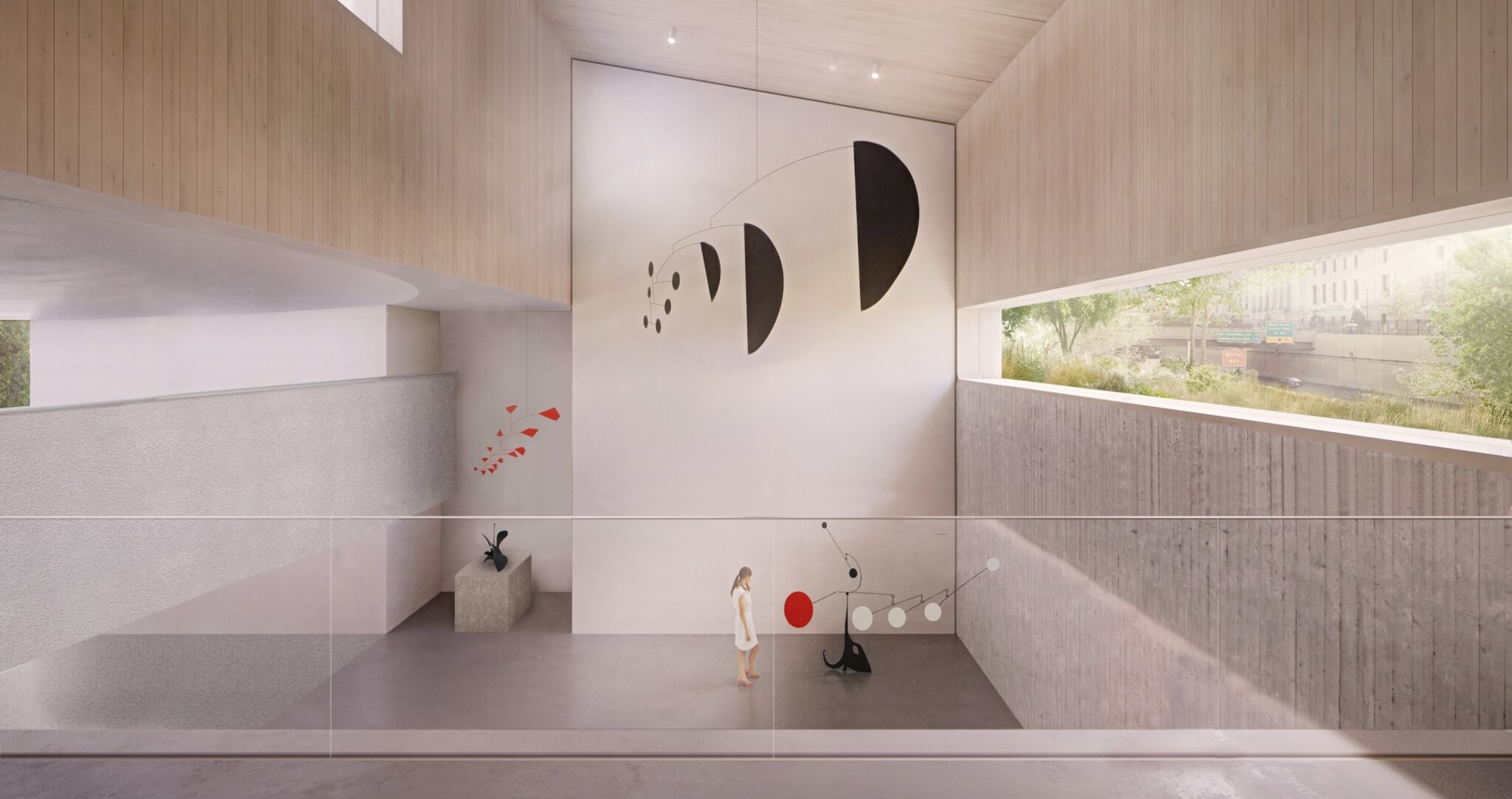
Describing the design as “more of an open-ended process rather than a finished concept based on a fixed program,” Herzog added that this “kind of conceptual path […] made us carve out the ground rather than build forms and volumes above —we were looking for space to present Calder’s work in a new and unprecedented way.”
“That space in the making eventually grew into a whole sequence of different galleries and also rather unexpected spaces, niches and gardens; such as the apse and the quasi-galleries or open plan gallery, the sunken or remnant gardens,” he elaborated. “And not only galleries in the classical sense, but every corner and angle, every stair and corridor should be offering itself up as a place to put art.”
Governed by a 10-person board and brought to life by the largesse of a group of deep-pocketed Philadelphians, Calder Gardens was launched by a collective of locally headquartered philanthropic entities—The Pew Charitable Trusts and lead donor the Neubauer Family Foundation among them—working in collaboration with the Calder Foundation and the City of Philadelphia and the Commonwealth of Pennsylvania. “Calder Gardens marks a significant step toward realizing a long-held vision to not only create a permanent home for Calder’s artistic contributions in his birth city but also to add yet one more jewel to the already culturally rich Parkway,” said Joe Neubauer, founder of the Neubauer Family Foundation and assistant treasurer of the Calder Gardens Board.
Calder Gardens, as mentioned, is slated to open in 2024. Permits have already been filed and construction work is anticipated to commence in the coming weeks.








